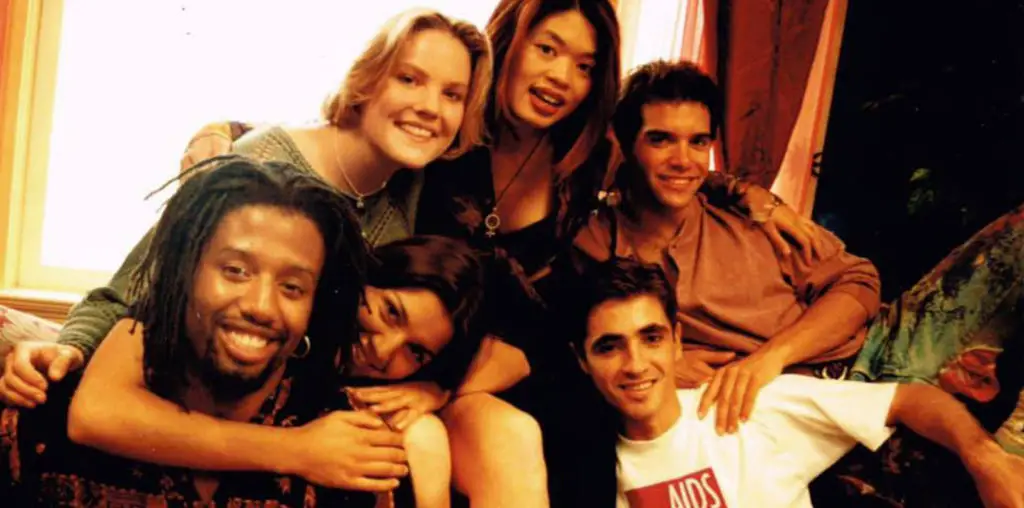
Who is who and who cares? There’s a Horton who hears a who, Edward Everett Horton, playing Russian ballet dancer Petrov’s (Fred Astaire) exasperated manager, Jeffrey Baird, completely bonkers over the sudden news that Petrov, a.k.a Peter P. Peters, is secretly married to Linda Keene (Ginger Rogers), another well-known dancer. Horton is most welcome in a plot that overshadows the famed dancing duo, taking his humor in stride, and never making a big show of it. In the opening minutes, when Petrov hands Baird a flipbook of a dancing Keene, Baird may as well have his tongue hanging out, but catches himself, as if trying to be a proper business guardian to Peters.
From Paris, it is out on the seas, where, after meeting Linda in her hotel room, Peters learns that she is sailing on the Queen Anne to New York. And thus is where the trouble begins, where one entourage either pits themselves against the other entourage, or something to that effect because with Peters and Keene together, the news swirls that they are married, mainly by one passenger hearing something and then it being published in the daily Ship’s Bulletin. Then in New York, the trouble continues as if everyone in New York has the time to hanker for news about Peters and Keene, the newspapers constantly giving them attention. This is definitely screenwriter Allan Scott’s New York, because characters like these couldn’t exist any other way.
As always, the plot is what makes this Astaire/Rogers pairing frustrating, the dances slightly undercut by that. Supposedly, Linda wants to be engaged to Jim Montgomery (William Brisbane) and as much effort as there is to use the character’s name, Jerome Cowan (as Arthur Miller) looks nearly the same as Brisbane. But in staunch ignorance of what might make you reach for the fast-forward button and rightfully so, the dances are entertaining enough to keep you hanging on. In an Art Deco engine room on board the ship, Astaire dances in time to the rhythm of the machinery, clanking, banging, hissing, and humming, while he jumps over railings and taps away. Astaire and Rogers dance twice together. The first is during their day together where a beloved Gershwin tune, “Let’s Call the Whole Thing Off” has them comparing their pronunciation of words amusingly. The titular finale, which brings ballet full circle, is only there to make the obvious happen: Bringing Astaire and Rogers back together, their characters intertwined for life, as only the Depression Era would have it because what kind of film is it if the two stars aren’t brought back together, no matter how right or wrong or at the expense of supporting characters who were once involved with the main ones? Of course when it comes to these two, expect other characters besides the obvious ones (Horton, and Eric Blore as hotel floor manager Cecil Flintridge, of whom Edward Hibbert must have been partially inspired by for Gil Chesterton on “Frasier”) to be wallpaper. It’s just dance and contrived romance here.
What’s always been nice about Warner Bros. serving as guardians for MGM’s older catalogue of films are the DVD cases, the front of them in fact. Movie poster history is well-served as each single-disc release of the company’s receives, when available, old movie posters placed on the front. “Shall We Dance” has a very nice painted portrait of Astaire and Rogers in mid-roller-skating, with the usual credits included. On the disc side, an audio commentary by songwriter Hugh Martin and Gershwin pianist Kevin Cole is friendly and chatty, as both watch in adoration of Astaire, educated about him and other facets of everyone involved. A featurette entitled “The Music from Shall We Dance” reaches through the full history of the film as best it can with stories of how it took some convincing to bring George and Ira Gershwin on board this musical, while valuable footage shines bright, Astaire rehearsing the engine room number “Slap that Bass”, in color. There’s also a Friz Freleng “Merrie Melodies” cartoon, Toy Town Hall, with toys bounding about as a young boy watches. As always, like in his other cartoons, Freleng has his way when it comes to cartoon caricatures. “Sheik to Shiek”, a short musical film, puts a radio salesman in the Arab desert (or as Arab as Hollywood believed back then, featuring a harem, a sheik, and soldiers in the desert) after a flying golf ball knocks him cold on the course. He associates with the captain of a band of soldiers, before setting out to try to sell a radio to a sheik, whom he convinces to broadcast whatever he likes across the desert, “sheik to sheik”, as he jokes. Fortunately, as mild as this comedy is, it thankfully lacks even worse puns.
Some history books constantly crow about how great Fred Astaire and Ginger Rogers were. In dancing, they were artists. But on the whole, “Shall We Dance” showed that they didn’t always get the best of the world they were entitled to. When they dance, forget about the story. When the story is being pushed along, rewind or fast-forward to the dancing or the comic moments of Horton and Blore. Then forget about the rest.
